Debriefing AirSelfie 2
Not so long ago, a novelty became available - the flying AirSelfie 2 camera. It also fell into my hands - I propose to see a small report and conclusions on this gadget.

So ...
This is a fairly new interesting gadget, which is a small quadcopter with Wi-Fi control from a smartphone. Its size is small (approximately 98x70 mm with a thickness of 13 mm), and the body is aluminum with propeller protection. Brushless motors are used, propellers are balanced, and several types of sensors are used to maintain altitude: an optical height sensor and an acoustic surface sensor.
Depending on the configuration, AirSelfie 2 can be supplied with a case-external battery. This case is designed to recharge the drone "on the run." Capacity is enough for 15-20 charge cycles.
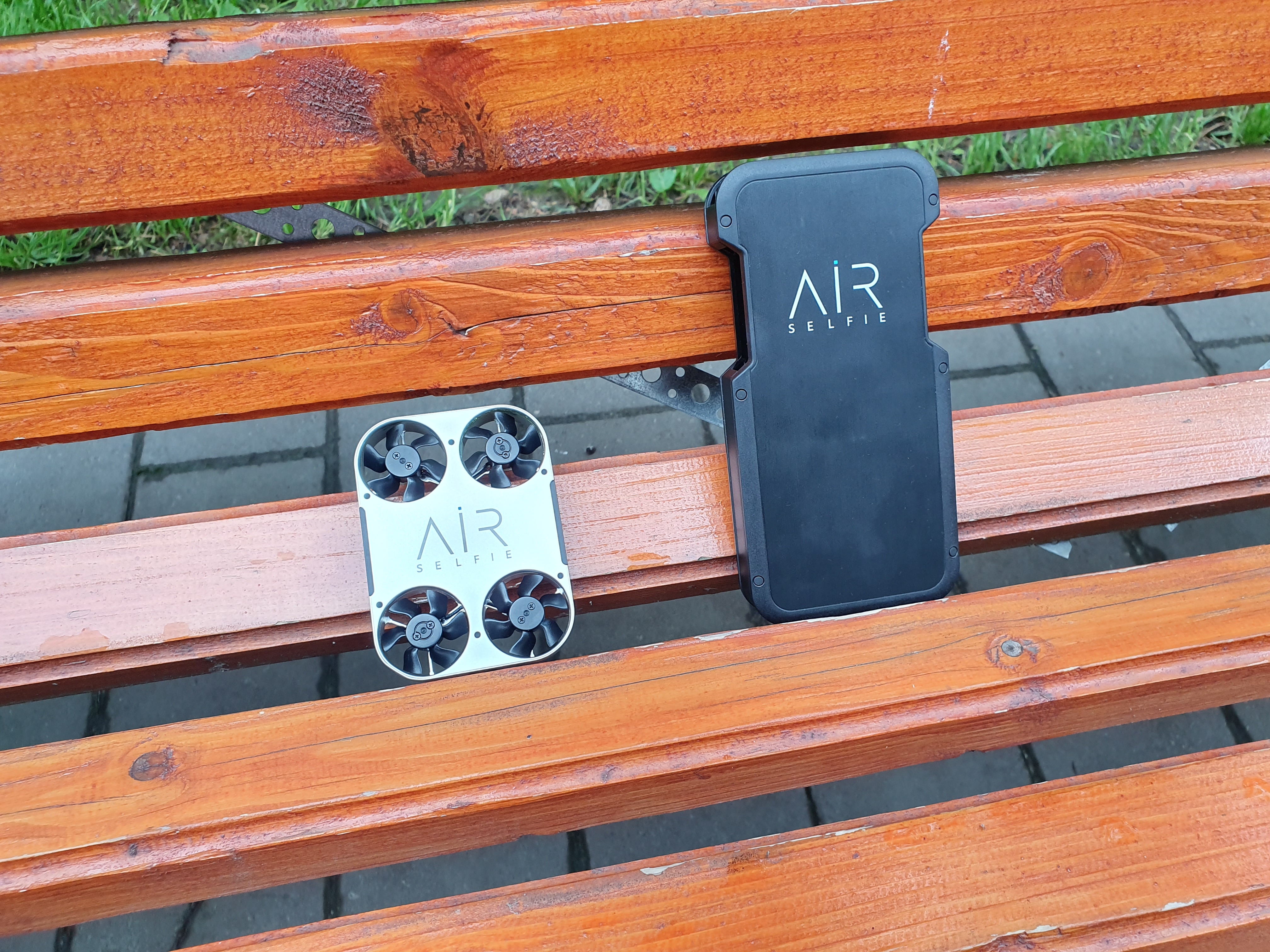
But the main "trick", which was announced by the manufacturer - is the ability to take pictures similar to pictures from the front camera of the smartphone ("self", selfie). The difference from the smartphone is that the drone can move some distance away, the drone can shoot at eye level or a little higher, and it can also shoot a group of people.

Altitude retention is carried out according to the sensors located on the bottom side of the drone. Maximum flight altitude (as well as range) are limited. If the drone moves away from you for some reason, then when the signal is lost, it will emit a nasty signal and slowly decline to land.
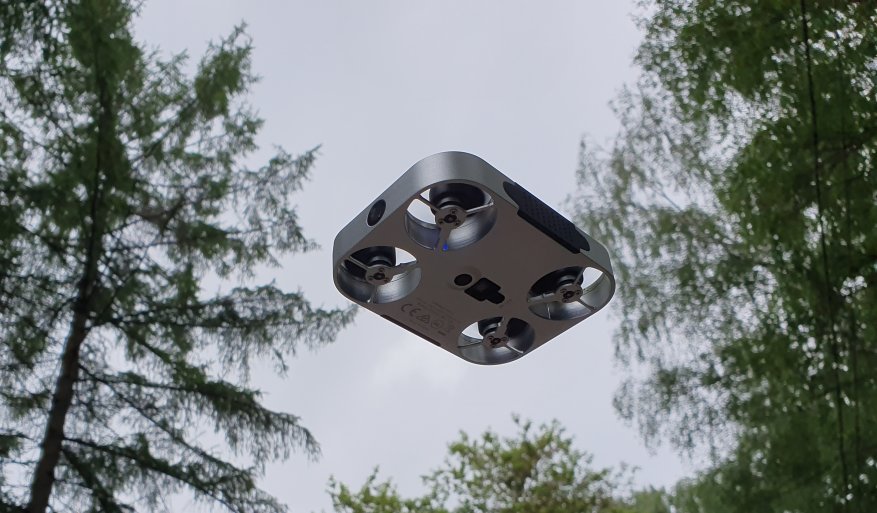
Concerning the characteristics of the camera and the main characteristics of the AirSelfie 2 drone.
A camera with a Sony 12MP sensor with optical (OIS) and electronic (EIS) stabilization is announced, which allows you to shoot FHD 1080p video and take photos with a resolution of 4000x3000 pixels. The camera has a wide angle of view, and is also installed with a slight tilt down (2 °).

It is possible to set a timer for the picture - you can independently pose in front of the drone or gather in a group.
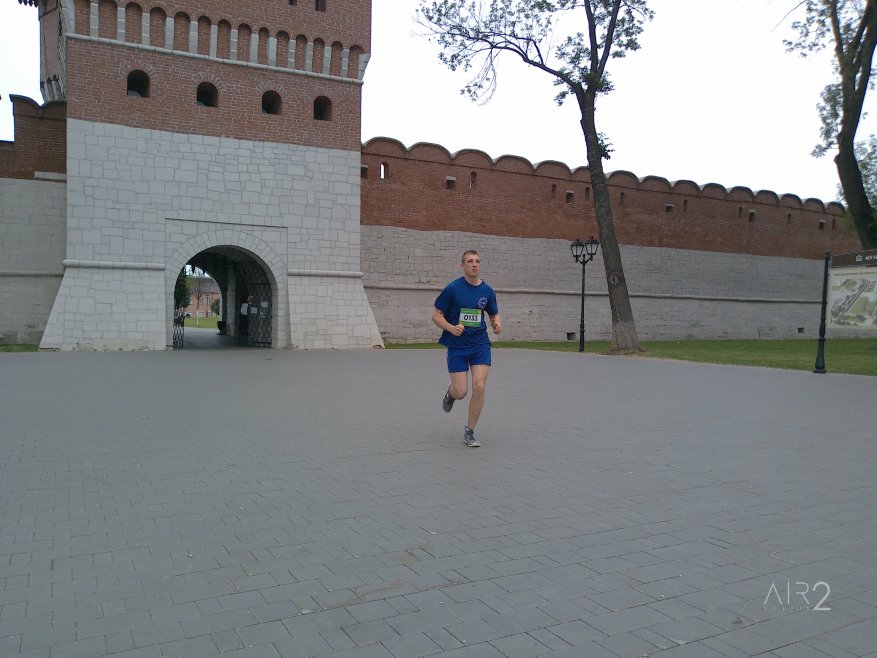
Another example of "self."

Photo file properties.
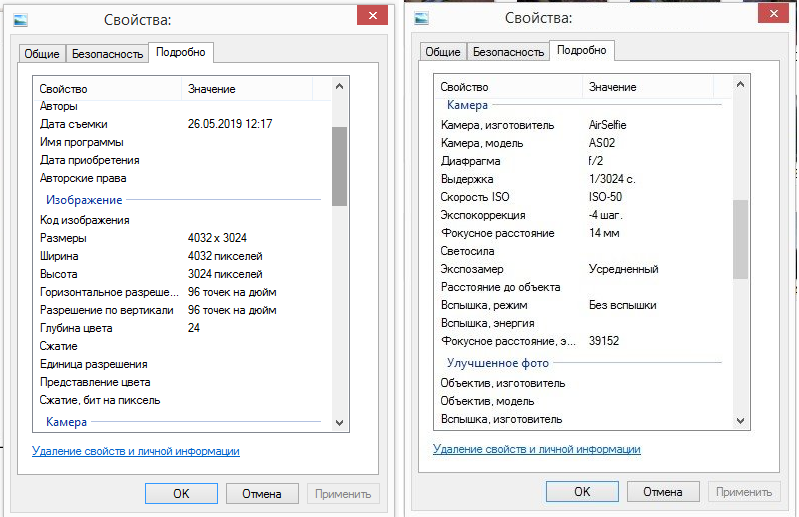
The drone shoots better than its counterparts with FPV micro-cameras, but it is far from the quality of huge hexacopters with a suspended mirrorless mirror. True, the cost is more affordable than the latter.
Regarding flight control.
Everything is quite simple here, and AirSelfie 2 simply copies ready-made solutions for small FPV / WiFi drones. There are button controls (easy mode), joystick and gyro control (advanced modes).
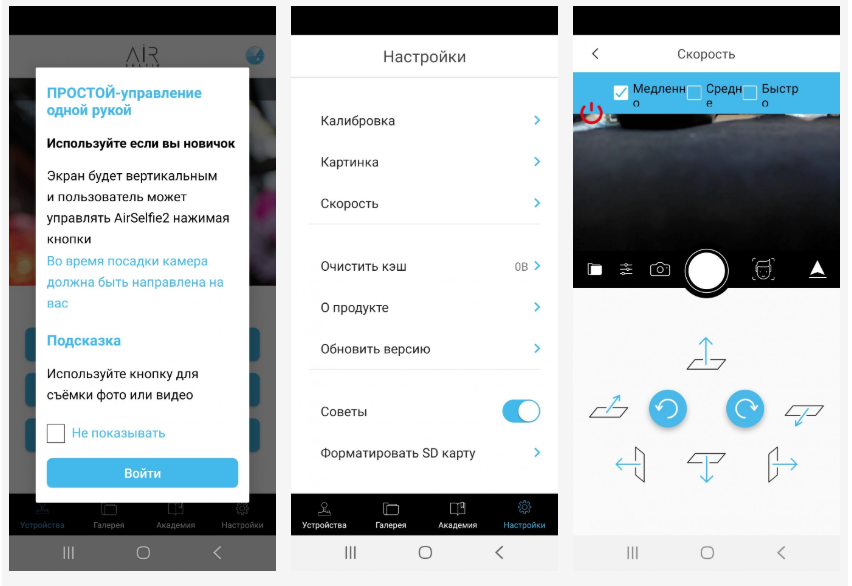
And if the simple mode is more or less clear and convenient, then controlling the gyro is quite complicated and takes time to get used to. Management of two joysticks is more convenient.
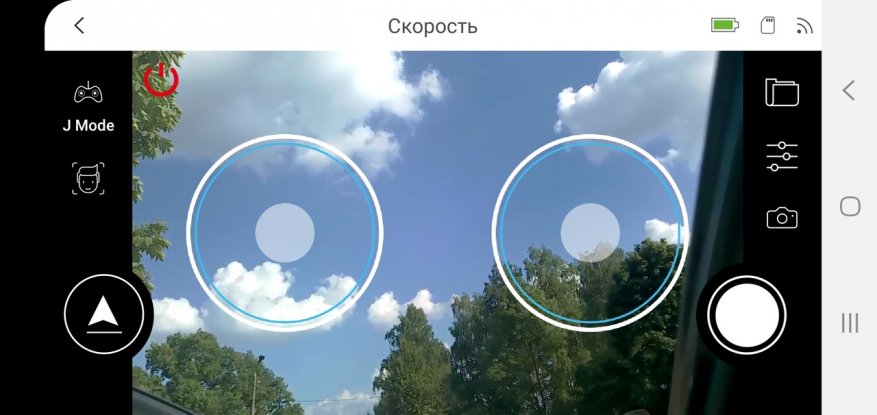
About the handling.
The drone is very small and light (80 g.), The propellers are small - it simply cannot fight the wind. Indoors (in large halls), he manifests himself without any problems. But in the open space there is a chance not to catch him back.
Due to its compact size, a 2S 7.4V battery is installed inside, a small capacity that lasts for 5 minutes of operation. Then back to the case, to recharge.
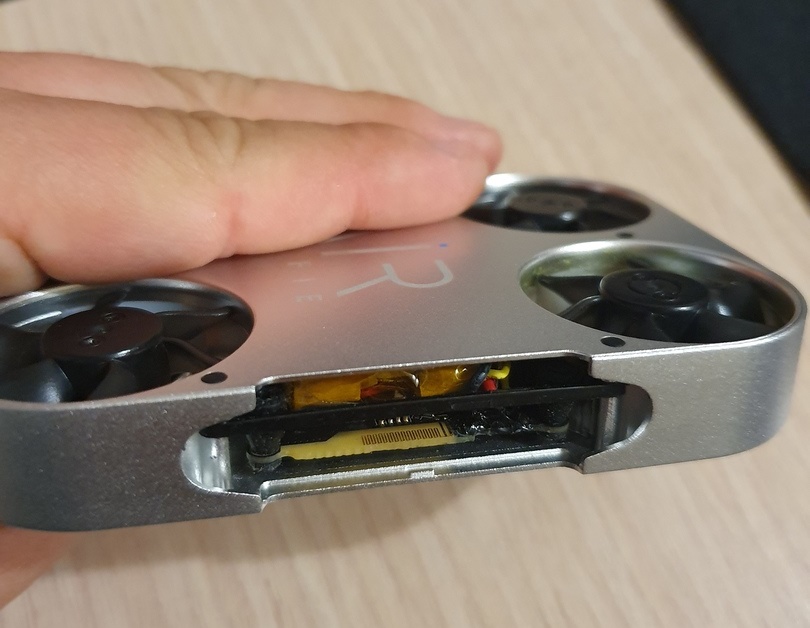
About the case.
I already mentioned that AirSelfie 2 has a well-thought-out solution: a special protective case for transportation, storage and recharging. The drone is installed at its regular place inside the case, and recharged via the USB-C connector. The capacity of the built-in battery in the case is 10'000 mAh. There is a function of a power bank - you can recharge your smartphone.
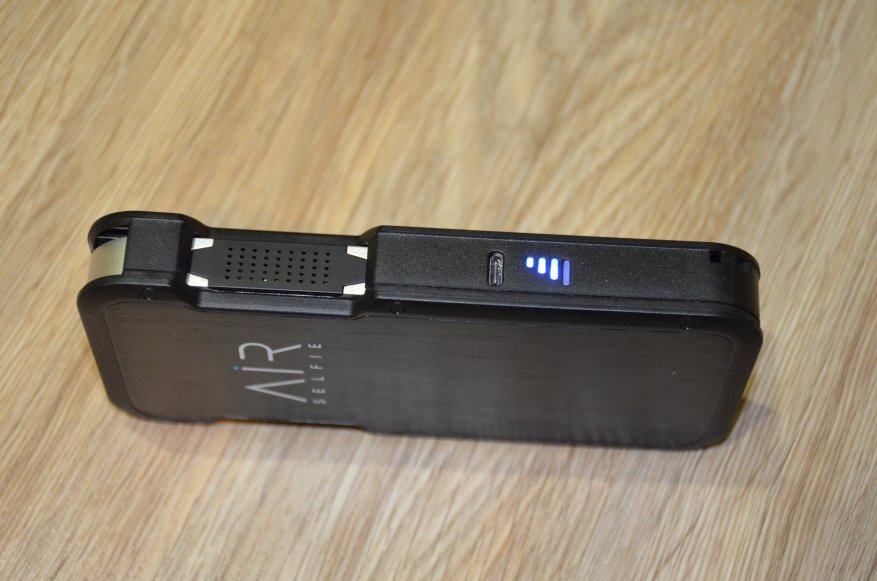
With all the advantages and disadvantages, AirSelfie 2 outweighs the main thing: the drone is very compact and simple. It fits in your pocket. It is easy to take with you for a walk, a trip, even on an airplane.
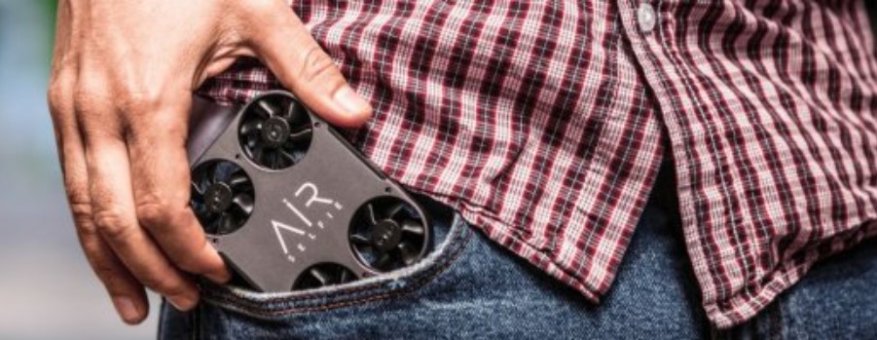
The drone from the hand starts. Press the start button (the drone spins the propellers) and toss it. Using the sensor, the drone holds the flight altitude. You can safely manage it.

So here. Currently, two “brothers” are serious competitors for AirSelfie 2: this is Tello from DJI and MITU Drone from Xiaomi . Both are equipped with Wi-Fi and automation, but ...
Xiaomi MITU Drone has a rather weak 2MP camera (720p HD), decently soap and is designed for basic orientation during flights (cheap FPV), and DJI Tello has a 5MP camera, which provides slightly better pictures in the same resolution (720p HD). Neither the first nor the second has its own memory for storing photos. So you can fly at them, but it’s unlikely that you can use them for a selfie.

I am attaching a short video that gives a little idea of the Airselfie gadget.
And one more thing, I apologize in advance for the vertical video.
This is spontaneous shooting with AirSelfie 2.
What’s all the charm - just start it by throwing it from your hand, twist-twist as you like.
A big plus is that there is a strong Wow effect. A similar method of photographing attracts attention from the outside.
And most importantly - the flying Airselfie camera will help solve the issue of shooting where an ordinary camera can’t cope. Airselfie is a great opportunity to get great shots while traveling and on vacation. You don’t need to ask anyone - just launch the pocket “camera” in a matter of seconds and get great photos. With a selfie stick, this can not be done. Yes, and group moments come out successful: everyone in the frame, they didn’t miss anyone, no one left with the camera.
For testing, the AirSelfie 2 drone got from here . There is an option without a charging case.
Please note that the promotional code for the 10% discount is valid: selfiehabr .


So ...
This is a fairly new interesting gadget, which is a small quadcopter with Wi-Fi control from a smartphone. Its size is small (approximately 98x70 mm with a thickness of 13 mm), and the body is aluminum with propeller protection. Brushless motors are used, propellers are balanced, and several types of sensors are used to maintain altitude: an optical height sensor and an acoustic surface sensor.
Depending on the configuration, AirSelfie 2 can be supplied with a case-external battery. This case is designed to recharge the drone "on the run." Capacity is enough for 15-20 charge cycles.

But the main "trick", which was announced by the manufacturer - is the ability to take pictures similar to pictures from the front camera of the smartphone ("self", selfie). The difference from the smartphone is that the drone can move some distance away, the drone can shoot at eye level or a little higher, and it can also shoot a group of people.

Altitude retention is carried out according to the sensors located on the bottom side of the drone. Maximum flight altitude (as well as range) are limited. If the drone moves away from you for some reason, then when the signal is lost, it will emit a nasty signal and slowly decline to land.

Concerning the characteristics of the camera and the main characteristics of the AirSelfie 2 drone.
A camera with a Sony 12MP sensor with optical (OIS) and electronic (EIS) stabilization is announced, which allows you to shoot FHD 1080p video and take photos with a resolution of 4000x3000 pixels. The camera has a wide angle of view, and is also installed with a slight tilt down (2 °).

It is possible to set a timer for the picture - you can independently pose in front of the drone or gather in a group.

Another example of "self."

Photo file properties.

The drone shoots better than its counterparts with FPV micro-cameras, but it is far from the quality of huge hexacopters with a suspended mirrorless mirror. True, the cost is more affordable than the latter.
Regarding flight control.
Everything is quite simple here, and AirSelfie 2 simply copies ready-made solutions for small FPV / WiFi drones. There are button controls (easy mode), joystick and gyro control (advanced modes).

And if the simple mode is more or less clear and convenient, then controlling the gyro is quite complicated and takes time to get used to. Management of two joysticks is more convenient.

About the handling.
The drone is very small and light (80 g.), The propellers are small - it simply cannot fight the wind. Indoors (in large halls), he manifests himself without any problems. But in the open space there is a chance not to catch him back.
Due to its compact size, a 2S 7.4V battery is installed inside, a small capacity that lasts for 5 minutes of operation. Then back to the case, to recharge.

About the case.
I already mentioned that AirSelfie 2 has a well-thought-out solution: a special protective case for transportation, storage and recharging. The drone is installed at its regular place inside the case, and recharged via the USB-C connector. The capacity of the built-in battery in the case is 10'000 mAh. There is a function of a power bank - you can recharge your smartphone.

With all the advantages and disadvantages, AirSelfie 2 outweighs the main thing: the drone is very compact and simple. It fits in your pocket. It is easy to take with you for a walk, a trip, even on an airplane.

The drone from the hand starts. Press the start button (the drone spins the propellers) and toss it. Using the sensor, the drone holds the flight altitude. You can safely manage it.

So here. Currently, two “brothers” are serious competitors for AirSelfie 2: this is Tello from DJI and MITU Drone from Xiaomi . Both are equipped with Wi-Fi and automation, but ...
Xiaomi MITU Drone has a rather weak 2MP camera (720p HD), decently soap and is designed for basic orientation during flights (cheap FPV), and DJI Tello has a 5MP camera, which provides slightly better pictures in the same resolution (720p HD). Neither the first nor the second has its own memory for storing photos. So you can fly at them, but it’s unlikely that you can use them for a selfie.

I am attaching a short video that gives a little idea of the Airselfie gadget.
And one more thing, I apologize in advance for the vertical video.
This is spontaneous shooting with AirSelfie 2.
What’s all the charm - just start it by throwing it from your hand, twist-twist as you like.
A big plus is that there is a strong Wow effect. A similar method of photographing attracts attention from the outside.
And most importantly - the flying Airselfie camera will help solve the issue of shooting where an ordinary camera can’t cope. Airselfie is a great opportunity to get great shots while traveling and on vacation. You don’t need to ask anyone - just launch the pocket “camera” in a matter of seconds and get great photos. With a selfie stick, this can not be done. Yes, and group moments come out successful: everyone in the frame, they didn’t miss anyone, no one left with the camera.
For testing, the AirSelfie 2 drone got from here . There is an option without a charging case.
Please note that the promotional code for the 10% discount is valid: selfiehabr .

